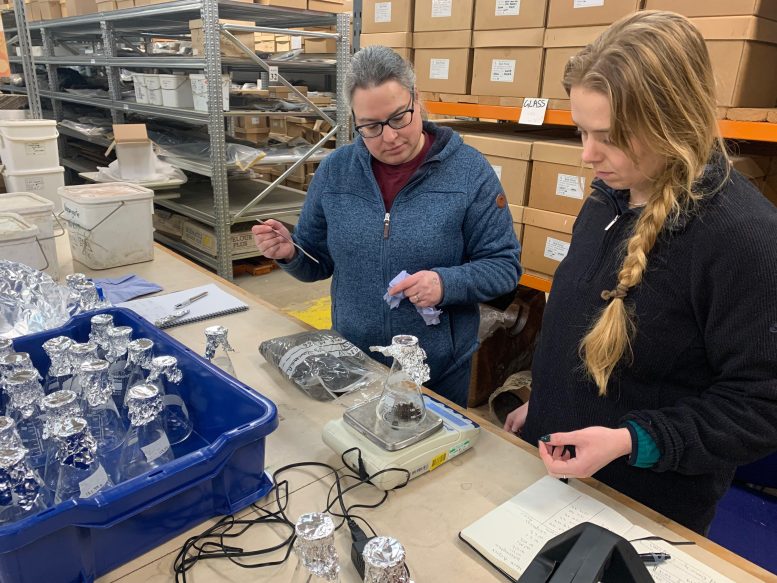Researchers have discovered evidence of microplastic contamination in ancient archaeological soil samples, suggesting that these modern pollutants have been present since at least the 1980s. This discovery raises concerns about the preservation and scientific value of archaeological sites and points to the need for further research into the effects of microplastics in a historical context.
Researchers have found evidence of microplastic pollution in archaeological soil samples for the first time.
The team discovered tiny microplastic particles in deposits more than seven meters deep in samples from the first or early second century that were excavated in the late 1980s.
Preserving archeology on site has been the preferred approach to managing historic sites for a generation. But the research team says the findings could prompt a rethink, as the tiny particles potentially endanger preserved remains.
Microplastics are small plastic particles with a size of 1 μm (one thousandth of a millimeter) to 5 mm. They come from a variety of sources, from larger pieces of plastic that have broken apart to resin pellets used in plastic manufacturing, which were commonly used in beauty products until around 2020.
The study, published in the journal Science of the entire environmentwas carried out by the Universities of York and Hull and supported by the educational charity York Archaeology.
The importance of the study
Professor John Schofield from the University of YorkThe United States Department of Archeology said: “This appears to be an important moment that confirms what we should have expected: that what were previously thought to be pristine archaeological deposits ripe for study are in fact contaminated with plastics , and that this also includes deposits.” Sampled and stored in the late 1980s.
“We know about plastic in the oceans and rivers. But here we see that our historical heritage contains toxic elements. The extent to which this contamination affects the evidentiary value of these deposits and their national significance is something we will next try to determine.”

The researchers identified 16 different microplastic polymer types in both contemporary and archival samples. Photo credit: York Archaeology
Microplastics in an archaeological context
David Jennings, chief executive of York Archaeology, added: “We view microplastics as a very modern phenomenon as we have only really been hearing about them for 20 years, with Professor Richard Thompson revealing in 2004 that they have been widespread in our seas since the 1960s years with the post-war boom in plastics production,”
“This new study shows that the particles entered archaeological deposits and, as in the oceans, this is likely to have been the case for a similar period of time, with particles found in soil samples taken and archived at Wellington Row in York in 1988. “
The study identified 16 different microplastic polymer types in both contemporary and archival samples.
“This becomes a problem for archeology because microplastics could affect the scientific value of archaeological deposits. Our best-preserved remains – for example, the Viking finds at Coppergate – were in a consistently anaerobic, waterlogged environment for over 1,000 years, preserving organic materials incredibly well. The presence of microplastics can and will alter the chemistry of the soil, potentially introducing elements that cause the organic remains to decay. If this is the case, preserving the archeology on site may no longer be appropriate,” added David Jennings.
The research team says further research into the effects of microplastics will be a priority for archaeologists given the potential impact of these man-made chemicals on archaeological deposits.
Reference: “The Contamination of Archaeological In Situ Remains: A Pilot Analysis of Microplastics in Sediment Samples Using μFTIR” by Jeanette M. Rotchell, Freija Mendrik, Emma Chapman, Paul Flintoft, Ian Panter, Giulia Gallio, Christine McDonnell, Catriona R. Liddle, David Jennings and John Schofield, January 8, 2024, Science of the entire environment.
DOI: 10.1016/j.scitotenv.2024.169941
